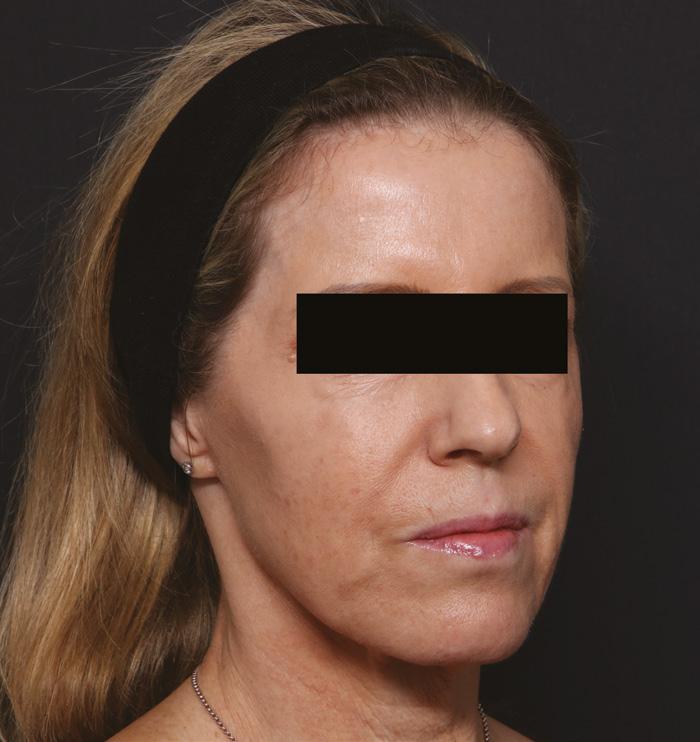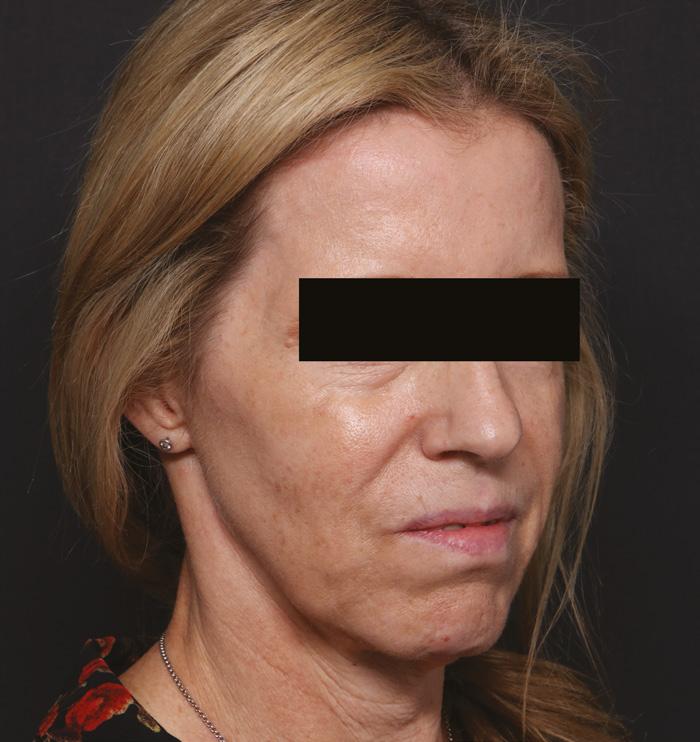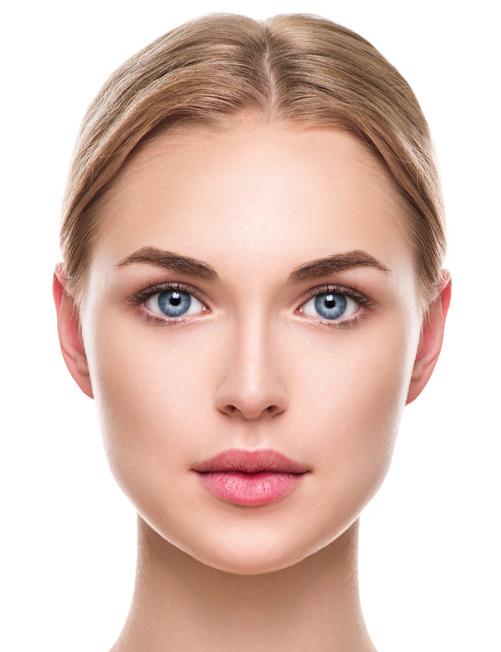
8 minute read
Capitalising Patient Imagery
A picture is worth a thousand words – so Top three tips for creating strong before and afters and case studies – including clinical research, marketing materials, educational or training materials and PR/social media assets. However, they can also be used to showcase your results at conferences to your peers or as part of a submission to a medical journal. Strong before/after imagery is often a key deciding factor for patients considering treatment and by leveraging these on your website and social channels, you can optimise the decision-making process. Including such imagery in your clinic marketing approach helps expand your existing customer base while attracting 2. Ensure all images allow for a direct likefor-like comparison of treatment effect Consistency is key (Figure 1). Firstly, utilise an appropriate high quality/DSLR camera or purchase an imaging device and ensure all images are taken with the same device/ platform. Watch out for image inconsistencies, such as bad or differing angles, poor lighting, different backgrounds or clothes, allowing makeup in either shot, different hairstyles or not held back from the face, and unnatural or inconsistent facial expressions.

Advertisement

3. Ensure images reflect the ‘average’ Capitalising result or patient response Although you might want to shout about your fabulous results, selectively using ‘above Patient Imagery average’ case studies can result in unrealistic expectations of your treatments (and subsequent patient complaints). This would Mr Benji Dhillon presents key considerations for using patient images in case studies obviously damage your trust and credibility among patients. If you still want to share these results, I advise you to make a separate the adage goes – and in a highly visual case study images Case study recruitment industry like aesthetics, patient imagery In order to gain the business and reputational It is industry standard to photograph patients is an extremely valuable tool to showcase benefits from strong patient imagery, it’s before, during and after aesthetic treatment clinical expertise, grow your reputation critical to follow some simple guidelines to and have a tick box in the consent form and underpin both educational and clinic ensure the images are of a high standard and informing patients of this. Many will also marketing initiatives. However, I have achieve what you need. include a tick box in the initial medical found that despite the growing industry questionnaire about consent to internal or knowledge of the importance of good 1. Make sure case studies reflect your external marketing use of images or use imagery, I am still regularly seeing lowdesired patient demographic for educational purposes, but, in my view, quality pictures shared by clinics. In this Think about how this would be best achieved the progression to proper case study status article, I will outline my best practice tips for for your business; with male or female requires a specific and considerate approach. creating powerful patient imagery for the patients? What age range would work best? I advise working with existing patients at first, purpose of clinic case studies, and how to Are you trying to attract a certain ethnicity as you have already established a rapport maximise these within your clinic PR and or are you accidentally excluding potential and trusting relationship. Raise the topic at the marketing. patients by not having case studies that end of their next consultation or appointment represent them? Consider how to tap into and highlight that you would like to use their Why imagery for case studies? not just your current demographic, but your treatment journey as a more in-depth case The usage of imagery – particularly patient desired target patients too. study. A useful way to inform and reassure can support a variety of clinic activities Before After note of the ‘best’ results achieved so far. those all-important new patients. Figure 1: Before and after image showcasing consistent photography parameters
Using imagery in PR Julia Kendrick, founder & director of Kendrick PR Images are powerful, but don’t tell the whole story. The biggest ‘convincer’ for patients considering treatment will be rooted in emotion. Pairing strong imagery with a testimonial or treatment experience will help bring to life the emotion behind a treatment decision. Testimonials help us imagine how we’d feel after having treatment ourselves – this is why they are a powerful conversion tool. Work with your case studies to capture their story and condense this down to a bite-size format (250 words or a one to two minute video) which takes the audience on the journey with them – before, during and after treatment. Be smart with usage across channels. Maximise imagery and testimonials by regularly including across your website and social channels. Utilise multiple formats – photos, videos and text – to ensure a mix of content; don’t just use wall-to-wall before and afters as this isn’t very engaging. Use your assets across all approved PR, marketing and educational channels, including clinic marketing materials, patient newsletters, clinical posters/podium presentations, website and blog, PR materials, social media channels and waiting room materials/videos.
potential case studies is to show them examples of what this could look like. Outline which aspects of treatment you would like to capture and why they are particularly suitable to be a case study, as well as giving a brief overview of the planned imagery usage.
I would always recommend being upfront from the start about the intended usage for marketing purposes (especially PR and social media) and if they raise a concern about being identified, you can explore options which obscure their identity – either by showing a close-up of the treatment area, or by obscuring the eyes/identifying characteristics. Once they are clear and aligned with what you want them to do, provide a written consent form, detailing everything you have discussed, for them to sign. Some clinics offer incentives to patients for agreeing to be case studies – such as a reduced treatment cost, or discount of their next chosen treatment. Whilst this can be a useful way to help generate some initial case studies, my guidance is to be cautious and ensure the terms are proportionate and reasonable so that there can be no suggestion of patients being incentivised to treat. In addition, this could be off-putting for some patients, many of whom look for clinics which has a discreet approach.
Consent Consent is the lynchpin on which all this activity depends and can result in potential legal implications if mishandled. 1 Once an image has been used online or on social media, it becomes virtually impossible to withdraw or eradicate (even if removed from the initial source page or channel), thanks to re-sharing or screenshotting actions. It is critical that the patient has a full understanding of how their image will be used and that they sign a comprehensive consent form which gives you the right to use the materials as stipulated. 1
My consent form includes: • Consent to photograph/record the patient before and after the treatment • Consent to use the patient’s name (first, last or both) and age • Permission to use and publish photographs/videos/testimonials both in print and digitally, for any lawful purposes such as clinical training or educational materials, marketing materials, or within other printed, online or broadcast media • The length of time that the photographs will be used for (in perpetuity, for up to one year, etc.) • That the patient waives their rights to any royalties or compensation for the use of the photo (if appropriate) • Clinic and patient signature and date boxes
Another important step to avoiding legal issues is data protection – firstly, by controlling which devices patient photos are taken on. It’s important to note that clinical photographs form part of the patient’s medical records and so they are regarded as ‘data’. 2 Any photos should be taken using clinic-owned devices as this prevents any problems that could arise from staff members having work images on their personal devices. Secondly, the data storage must be compliant with General Data Protection Regulations (GDPR) 3 and should be stored securely, 2 and this should be made clear to the patient within the consent form. The device must be password protected and without risk of it being stored on online ‘cloud’ storage accounts. 2,3 Have in writing that under no circumstances will you share this information with a third party without expressed consent and that the patient has the right to access, amend or withdraw the information at any time and for any reason.
Conclusion Patient imagery and testimonials are valuable assets for your aesthetic business. In this article, I have outlined why you should invest time and effort into creating your own powerful patient imagery and how to create the best possible tools to support patient education and clinic marketing activities. By taking a considered approach to case study recruitment, you can create tools which target, educate and convert both new and existing patients across a whole host of online and offline channels. Finally, by ensuring a comprehensive consent process, you will be able to advance your marketing plans with confidence, knowing that your reputation and business are protected moving forward.
Mr Benji Dhillon is the cosmetic director and co-owner of Define Clinic in Beaconsfield. Mr Dhillon trained in plastic surgery and worked for Allergan on its clinical trials, following which he switched to full-time aesthetic practice. He is part of the international faculty for Teoxane.
REFERENCES
1. Advertising Standards Agency – CAP Guidance on the marketing of surgical and non-surgical cosmetic procedures. <https://www.asa.org.uk/resource/cosmetic-interventions.html> 2. Swan M, ‘Patient Photography and Data’, Aesthetics journal, 2018. <https://aestheticsjournal.com/feature/patientphotography-and-data> 3. General Data Protection Regulation <https://gdpr-info.eu/>
13 & 14 MARCH 2020 / LONDON
Mr Benji Dhillon will be speaking at the Teoxane Symposium and Julia Kendrick will be speaking at the Business Track at ACE 2020 on March 13-14.
Register free using code 10201 aestheticsconference.com










